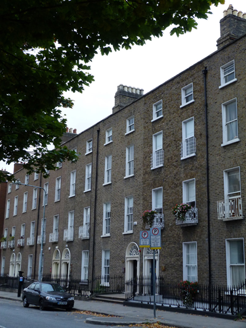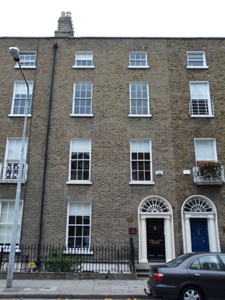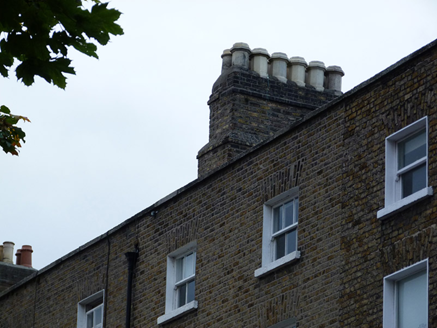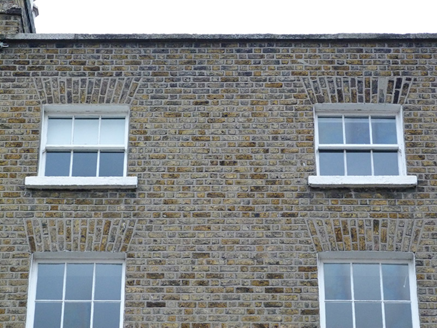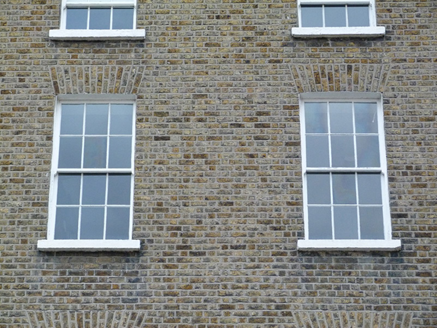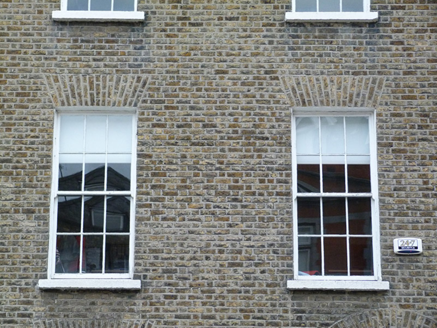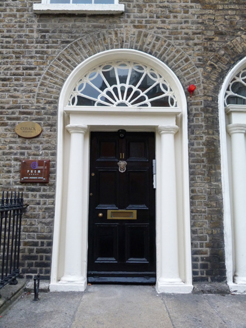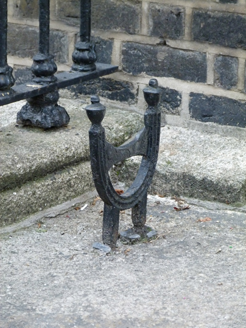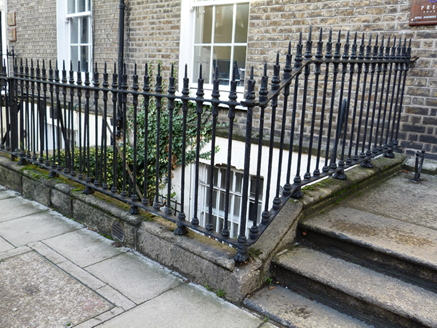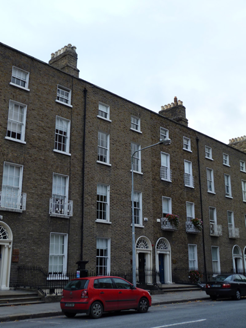Survey Data
Reg No
50920281
Rating
Regional
Categories of Special Interest
Architectural, Artistic
Original Use
House
In Use As
Office
Date
1810 - 1850
Coordinates
316184, 232927
Date Recorded
18/10/2015
Date Updated
--/--/--
Description
Terraced two-bay four-storey over basement former townhouse, built c. 1830, with five-storey elevation and four-storey return to rear (north) elevation. Now in use as offices. M-profile pitched roof, front span hipped to east end, hidden behind brick parapet with granite coping, having brick chimneystacks having octagonal clay pots and cast-iron rainwater goods to west end. Brown brick walls laid in Flemish bond over granite plinth course and rendered walls to basement to front elevation. Brown brick walls laid in Flemish bond over rendered walls to ground floor and brown brick laid in English garden wall bond to return to rear elevation. Square-headed window openings with masonry sills and rendered reveals, having six-over-six pane timber sliding sash windows to ground, first and second floors and three-over-three pane timber sliding sash windows to third floor. Square-headed window openings with rendered reveals, masonry sills to basement to front elevation. Square-headed window openings with masonry sills and six-over-six pane timber sliding sash windows to first, second and third floor and three-over-three pane timber sliding sash windows to fourth floor to rear elevation. Round-headed door opening with rendered reveals, with Tuscan columns supporting plain frieze and cornice having petal fanlight and timber panelled door. Granite platform with nosed granite steps, shared with building to east, flanked by wrought-iron railings on granite plinth, continuing to west to enclose basement area. Located on north side of Hatch Street.
Appraisal
A typical late Georgian house, the restrained classical façade is ornamented by its doorcase, fanlight and cast-iron railings. The Tuscan doorcase, which is paired with a similar doorcase to the south, represents the work of a skilled artisan and contributes to the artistic character of the building. Located within the Fitzwilliam Estate, which covered much of the south-east of the city, Hatch Street is named after John Hatch who leased development land from the Leeson family. While the street was approved by the Wide Street Commission in 1791, subsequent development was slow, only occurring in the first half of the nineteenth century.
